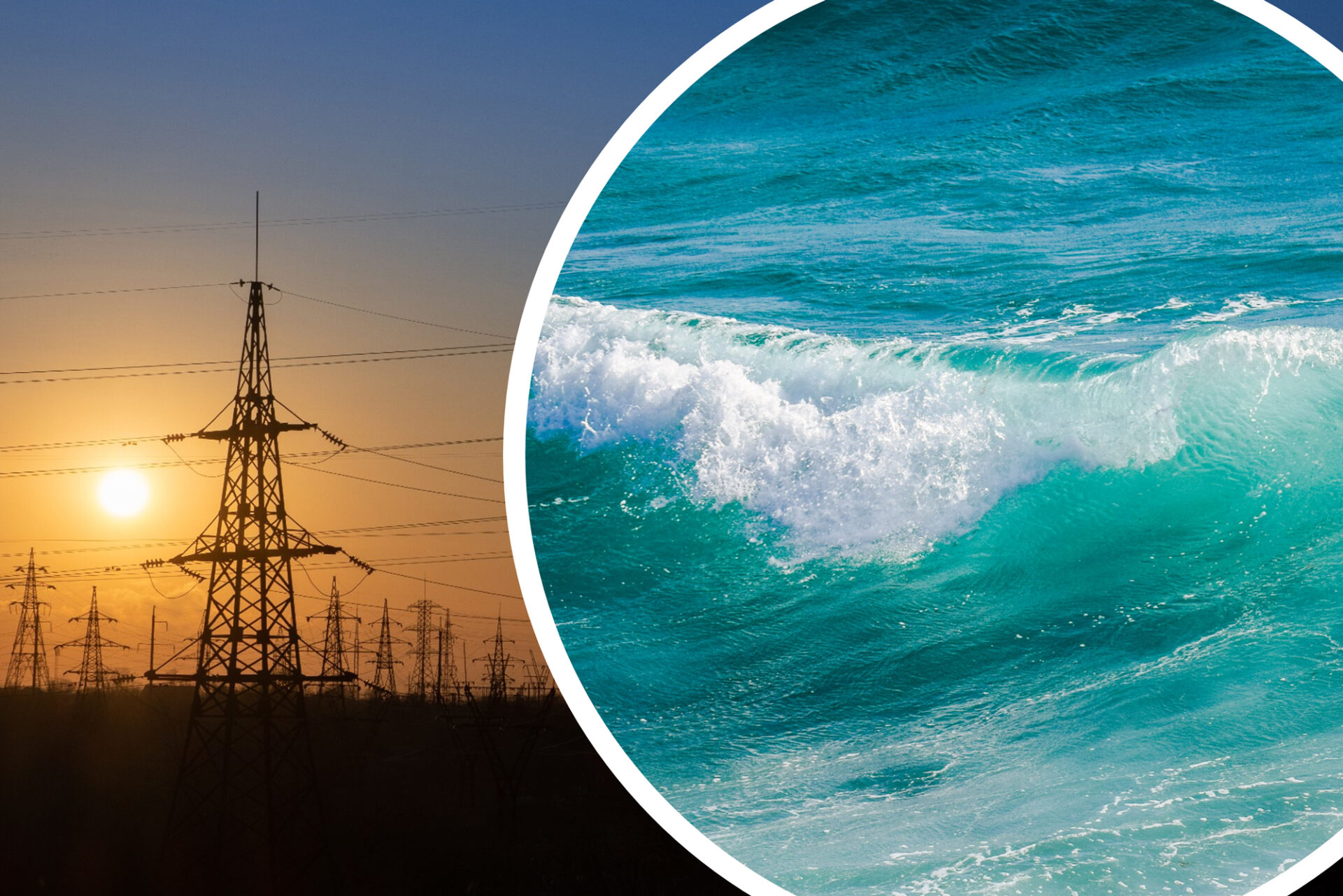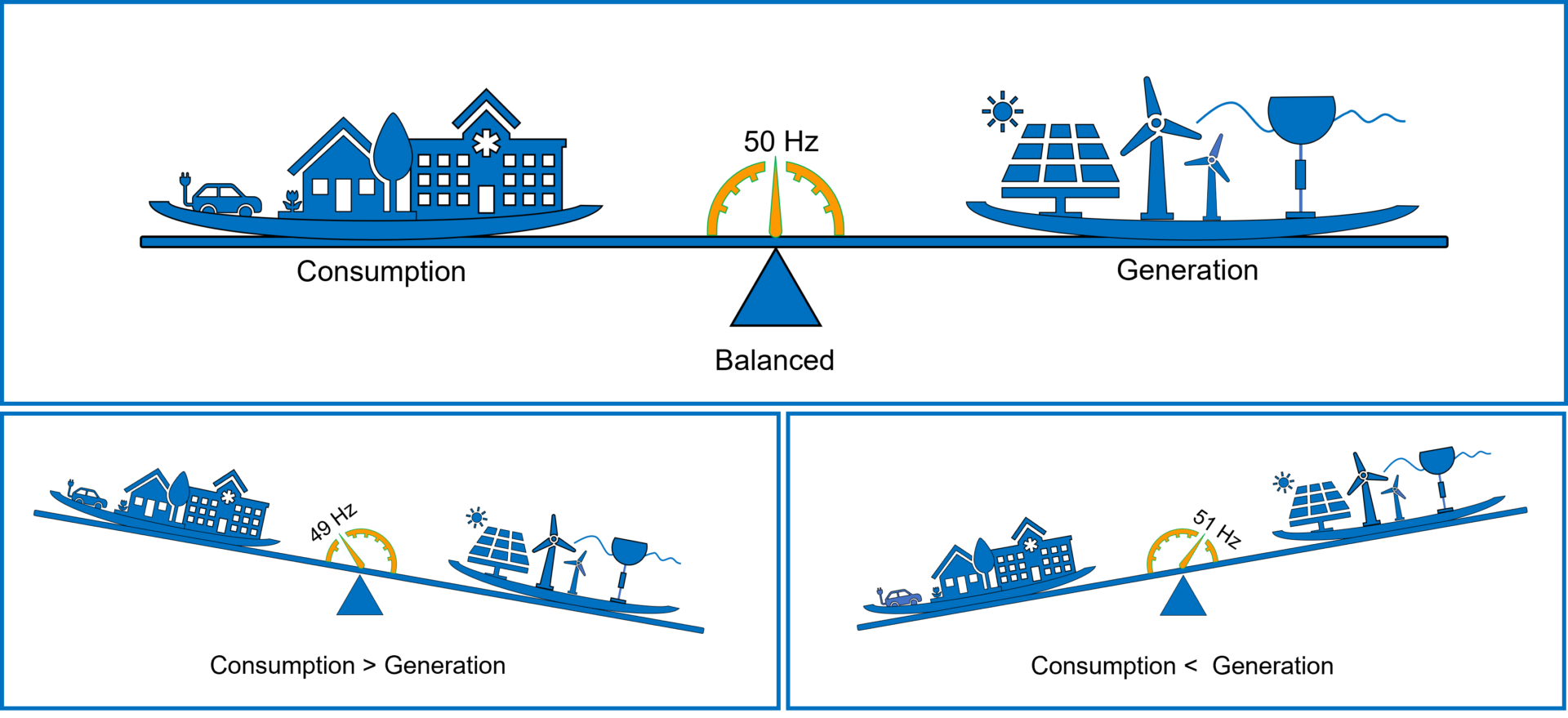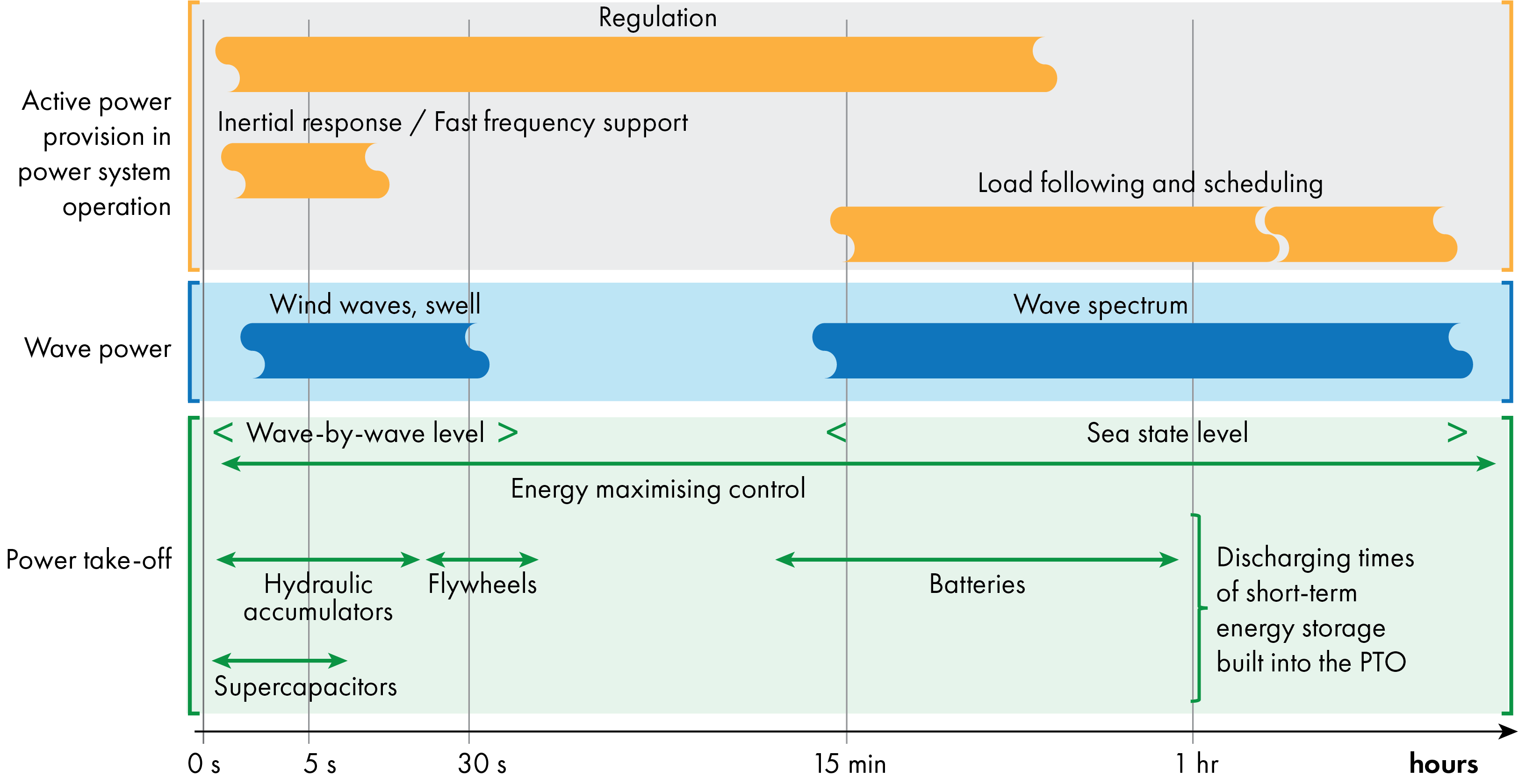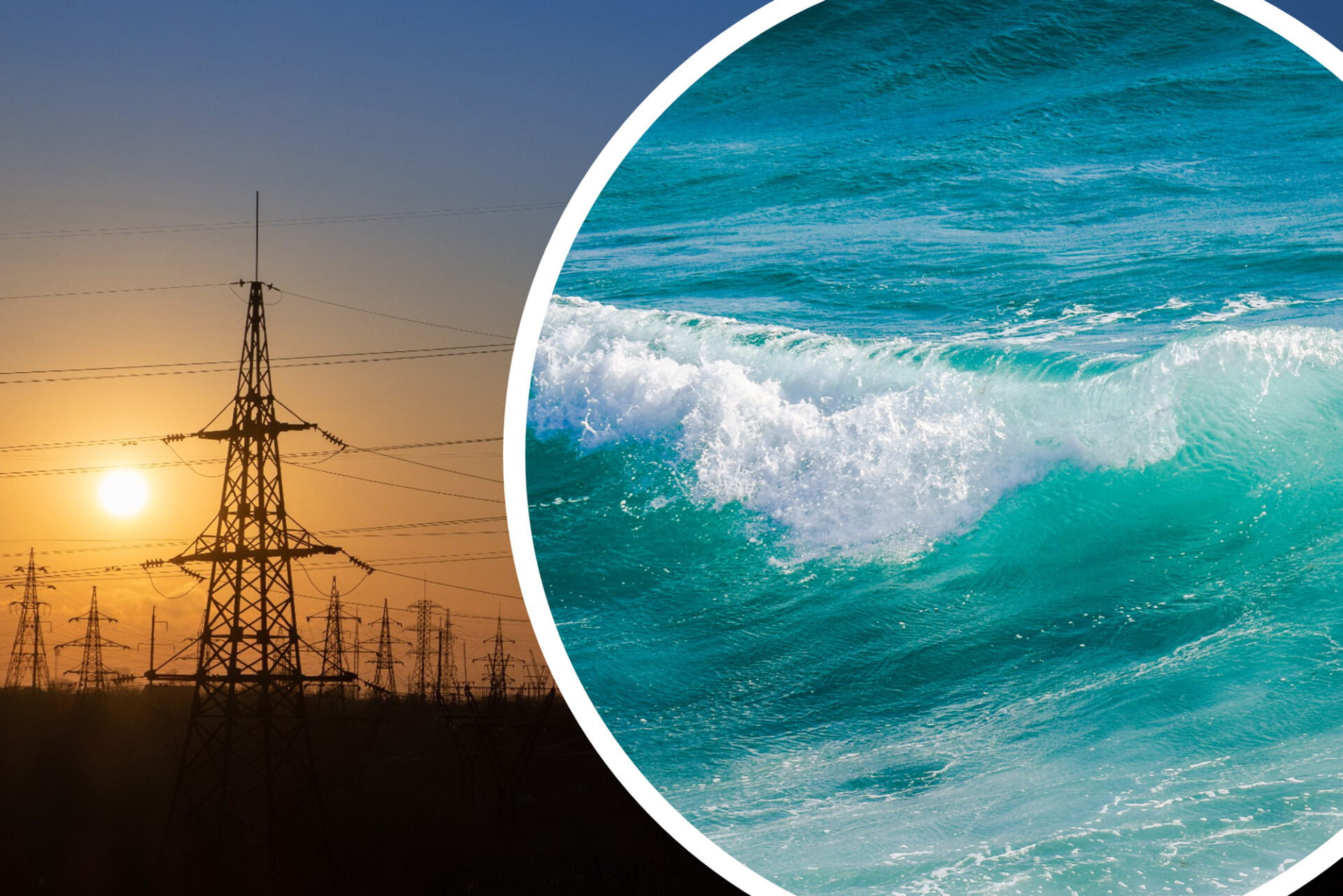Wave energy converters (WECs) are at an earlier stage of development than wind and solar power plants. A variety of concepts have been proposed and tested worldwide, but only a few WECs have exported power to electrical grids. Therefore, the actual impact of integrating high levels of wave power into grids is still uncertain. But how can we anticipate the requirements and opportunities for wave power integration in the near future? In this blog post, we use lessons learned from the technical challenges associated with integrating large amounts of other variable renewable energy sources to help answer this question.

Balancing the power grid
Operating a power system relies on continuously matching power supply with consumption. This is necessary to keep the electrical frequency of the grid within the range of normal operation, a fundamental measure of the system stability. The frequency drops when the demand for electricity is greater than the supply and rises when the demand is lower. Acceptable deviations during normal operation and large faults are specified according to local grid codes, which are sets of national (or regional) specifications that define the requirements for connecting power plants and other facilities to an electrical grid. Throughout the day, the demand must be met according to different timescales:
- From seconds to minutes, the power generation is regulated to maintain the grid frequency within the operational range in case of disturbances. Regulation is performed both automatically through frequency control and manually by grid operators.
- From tens of minutes to hours, the generation must be slowly adjusted to follow the natural changes in demand. This consists of increasing or decreasing the generated power, which can involve turning on/off generating units in the power system.
- On a daily basis, scheduling (i.e. generation planning) is performed to match the energy and peak power of the day. This requires predicting load, generation output and availability

Main challenges of integrating high levels of VRE into power grids
Variable renewable energy (VRE), e.g. wave, wind and solar photovoltaic (PV) energy, are highly dependent on weather conditions, daily cycles and seasonal patterns. Therefore, exporting large amounts of VRE to electrical grids increases the uncertainty and variability of the power output. Due to its fluctuating nature, VRE is more challenging when it comes to adjusting power output in accordance with changes in electrical demand.
In contrast to hydropower plants with large reservoirs, the primary energy source for wind, wave and solar power cannot be stored on site for conveniently increasing power production at the request of grid operators. Low demand can be met by limiting generation, but increased demand can only be met if the VRE has available reserve power.
In addition, VRE plants are commonly connected to the grid using power electronic interfaces, which makes the operation of the generator independent from the voltage and frequency of the power grid. This allows wind turbines and WECs to operate at variable speeds for maximum power tracking and survivability in different weather conditions. However, this type of grid connection does not add rotational inertia to the power system.
Rotational inertia is the tendency of a spinning object to remain in motion. In power systems, it represents the kinetic energy stored in large rotating generators that keeps them running for a while, even when there is a sudden loss of power. Basically, it resists changes in the electrical frequency, giving the system time to respond and rebalance power supply and consumption. Due to the reduction in inertia, grids with high levels of VRE are vulnerable to large frequency deviations, which affect system stability.
How are grid operators addressing these challenges?
Traditionally, active power balance was provided by conventional generation, e.g. large hydropower and fossil-fuel power plants, due to their rotational inertia and ability to more easily adjust the power output to meet changes in demand. In contrast, wind power plants mainly maximised their power output and exported power to grids whenever it was available. Due to the increasing levels of VRE and replacement of fossil-fuel power plants, grid operators are now:
- Defining more strict requirements for the interconnection: Some power systems (e.g. in Ireland and the UK) now require that wind power plants provide frequency control support, depending on their rated power. Therefore, the wind turbines do not extract maximum power from wind. Instead, they operate at reduced power, which enables them to increase and decrease their power output during specific frequency deviations.
- Developing new services for faster frequency support: In case of major disturbances in the power system, generating units (e.g. wind turbines) providing the service must deliver power faster than in traditional frequency control. Power electronics interface can be controlled to emulate the inertia of synchronous generators, or a constant power can be injected during a few seconds. In either case, a power reserve must be available.
Furthermore, accurate VRE forecasting techniques and coordination with energy storage systems are essential for an effective and reliable integration of high levels of VRE.
How can wave energy contribute to active power balance?
Wave energy converters (WECs) capture energy from ocean waves and convert it into electricity through a power take-off (PTO) system. While WECs are still at an early stage of development, we can use the lessons learned from high export of other types of VRE to anticipate the future requirements and opportunities for wave power integration, and even adapt WEC design.
For instance, following the recent developments in wind power integration, it can be expected that WECs will also need to support the grid operation by contributing to the active power balance. Combining wave power with other types of VRE (e.g., wind and solar PV) can naturally contribute to this power balance due to the complementarity of these different energy types. In addition to the specific timescales of wave power, short-term energy storage components built into the PTO can also be utilized. An overview of the typical timescales of WECs, including energy storage from PTO systems, and active power provision in power systems indicates that there is significant potential for wave farms (i.e. arrays of WECs) to support the stable operation of the power grid, see figure below.

Similar to wind turbines, WECs can operate below the available maximum power in order to have a margin for increasing and decreasing the power output. Additionally, in relation to the PTO energy storage capabilities,
- In the range of seconds, WECs, such as oscillating bodies with hydraulic accumulators and oscillating water column (OWC) systems with flywheels, can increase the export of active power for delivering fast frequency support or regulation, provided that the control system responds quickly enough to the commands. For instance, the energy stored in the form of pressurised air (or water) in WECs with accumulators can be used for this purpose.
- In the range of minutes and hours, accurate resource forecasts will be fundamental for minimising the uncertainty related to power reserves. Coordinating with batteries in the PTO system can be particularly beneficial in these cases.

Ultimately, the ability for WECs to provide frequency support to grids will rely mainly on the PTO capabilities, the availability of power reserves, and the control system. This will add another layer to the PTO control system, which has commonly aimed to maximise the power extracted from waves, and will require the development of a hierarchical control structure at a wave farm level – a topic that has not been widely discussed by the wave energy community yet.
This blog post was originally written for the IMPACT project, which aims to develop and demonstrate a next-generation testing approach for Wave Energy Converters (WECs). More details can be found in the corresponding paper Frequency support by wave farms in low inertia power systems.









Comments
No comments yet. Be the first to comment!